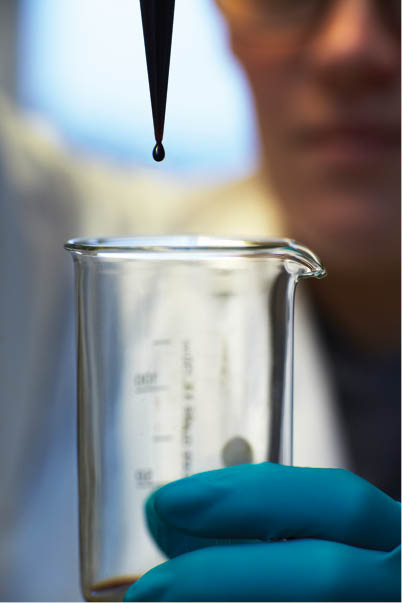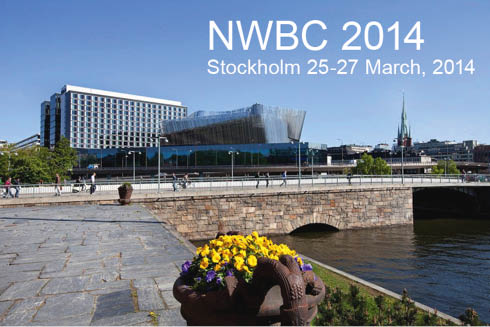Introduction
The Nordic Wood Biorefinery Conference (NWBC) is the leading event where research and industry meet to discuss recent wood-based biorefinery developments. NWBC gathers expert speakers from the chemical, energy, and pulp and paper industries as well as recognized representatives from the global research community. The conference NWBC is jointly organized by the Swedish research institute Innventia and the Finnish research institute VTT. The next event – the 5th Nordic Wood Biorefinery Conference (NWBC 2014) – will take place in Stockholm, 25–27 March, 2014, at the Stockholm Waterfront Congress Centre in the heart of the city.
Topics
The 5th Nordic Wood Biorefinery Conference will present the latest ideas and developments in biorefinery separation and conversion processes as well as new biobased products from wood biorefinery: energy, chemicals and materials. Apart from technical/scientific process/product subjects, economy and sustainability issues will also be addressed.
New products in a bioeconomy
In a time when many activities around the world focus on replacing products made from fossil resources with renewables, the interest for using wood material is increasing. Since the first conference, NWBC 2008 in Stockholm, many promising research findings have been presented and a lot of progress is currently being made. Some topical areas are reactive cellulose for producing textile fibres, lignin for carbon fibres, hemicellulose in new polymer materials and a new pulp mill-integrated ethanol process. The pulp mill is uniquely suited to function as a biorefinery: Wood-based “green” polymers, chemicals and fuels can be produced on a large scale in parallel with pulp production. The large amount of wood compounds present in black liquor, bark and forest residues are excellent sources of value-added chemicals and materials. The organic compounds can be used as they are, or after chemical modification.
Reduced demand for printing and writing paper in the wake of new media habits make other uses of cellulose increasingly interesting. Meanwhile, the cellulose-based textiles are experiencing a renaissance as an environmentally sustainable alternative to cotton. The key issue for today’s research is to modify the pulping process to produce cellulose with high reactivity, i.e., low aggregation and high porosity of the fibre wall, which will make it easier to dissolve.
Lignin is a wood component with the great potential of being used as a high value biofuel as well as a raw material for so-called green chemicals and materials, such as carbon fibres and activated coal. Lignin for fuel applications or processing can, for example, be extracted in large quantities from kraft mill black liquor with the LignoBoost process, developed by Chalmers and Innventia. This technology is today owned by Metso and the first commercial plant started in North America in March, 2013.
The conversion of biomass (forest residues and black liquor etc.) into transportation fuels, by pyrolysis or gasification for instance, is another area of great interest. Production of “second generation” biofuels and biochemicals from sugars can also be integrated in the pulp mill. POLYNOL is a Swedish-Brazilian consortium currently being launched, which will develop a new process for co-production of polymers, ethanol and lignin in the pulp mill. The ethanol may be partly used as raw material for polymers for barrier materials in liquid packaging which is also manufactured in the integrated pulp mill.
Call for papers
Delegates are kindly invited to submit papers for oral or poster presentations to the NWBC. Abstracts for selection of oral presentations are due before 2 September, 2013. For more information on submission deadlines, conference fees and programme, see www.innventia.com/nwbc2014.


©2013 by Walter de Gruyter Berlin Boston
This article is distributed under the terms of the Creative Commons Attribution Non-Commercial License, which permits unrestricted non-commercial use, distribution, and reproduction in any medium, provided the original work is properly cited.
Articles in the same Issue
- Masthead
- Masthead
- Graphical abstracts
- In this issue
- Editorial
- Can we plan the future of the next generation: what will John and Mary in 2150 say?
- Review
- Ferrocene-derived P,N ligands: synthesis and application in enantioselective catalysis
- Original articles
- Purification and utilization of a formerly incinerated sodium nitrite bearing wastewater stream
- Microwave heating and conventionally-heated continuous-flow processing as tools for performing cleaner palladium-catalyzed decarboxylative couplings using oxygen as the oxidant – a proof of principle study
- A highly efficient eco-friendly AFO reaction using grinding technique: synthesis of 3-hydroxy-2-phenyl-4H-chromen-4-ones
- Experiments with the titanium dioxide-ruthenium tris-bipyridine-nickel cyclam system for the photocatalytic reduction of CO2
- People
- Krishna Deo Prasad Nigam honored with Humboldt Research Award
- Company profile
- MONOJO Biotech
- Organization profile
- ISPT – The Institute for Sustainable Process Technology
- Conference announcements
- 4th International Congress on Green Process Engineering (GPE-2014; Seville, Spain, April 7–10, 2014)
- 5th Nordic Wood Biorefinery Conference (Stockholm, Sweden, March 25–27, 2014)
- The 44th IUPAC World Chemistry Congress and the 47th IUPAC General Assembly (Istanbul, Turkey, August 11–16, 2013)
- XIth European Congress on Catalysis: 20 Years of Catalysis… and Beyond (Lyon, France, September 1–6, 2013)
- AMWC 2013: Advanced Materials World Congress (İzmir, Turkey, September 16–19, 2013)
- Kekulé cycle XV, 2013–2014
- Conferences 2013–2015
- Book reviews
- Downstream processing in biotechnology
- Catalytic process development for renewable materials
Articles in the same Issue
- Masthead
- Masthead
- Graphical abstracts
- In this issue
- Editorial
- Can we plan the future of the next generation: what will John and Mary in 2150 say?
- Review
- Ferrocene-derived P,N ligands: synthesis and application in enantioselective catalysis
- Original articles
- Purification and utilization of a formerly incinerated sodium nitrite bearing wastewater stream
- Microwave heating and conventionally-heated continuous-flow processing as tools for performing cleaner palladium-catalyzed decarboxylative couplings using oxygen as the oxidant – a proof of principle study
- A highly efficient eco-friendly AFO reaction using grinding technique: synthesis of 3-hydroxy-2-phenyl-4H-chromen-4-ones
- Experiments with the titanium dioxide-ruthenium tris-bipyridine-nickel cyclam system for the photocatalytic reduction of CO2
- People
- Krishna Deo Prasad Nigam honored with Humboldt Research Award
- Company profile
- MONOJO Biotech
- Organization profile
- ISPT – The Institute for Sustainable Process Technology
- Conference announcements
- 4th International Congress on Green Process Engineering (GPE-2014; Seville, Spain, April 7–10, 2014)
- 5th Nordic Wood Biorefinery Conference (Stockholm, Sweden, March 25–27, 2014)
- The 44th IUPAC World Chemistry Congress and the 47th IUPAC General Assembly (Istanbul, Turkey, August 11–16, 2013)
- XIth European Congress on Catalysis: 20 Years of Catalysis… and Beyond (Lyon, France, September 1–6, 2013)
- AMWC 2013: Advanced Materials World Congress (İzmir, Turkey, September 16–19, 2013)
- Kekulé cycle XV, 2013–2014
- Conferences 2013–2015
- Book reviews
- Downstream processing in biotechnology
- Catalytic process development for renewable materials

